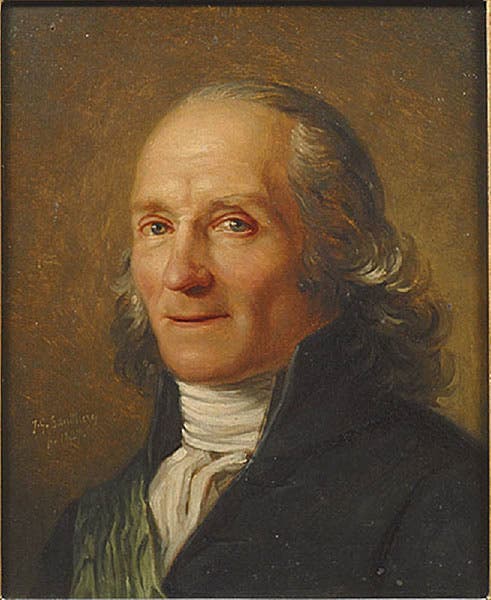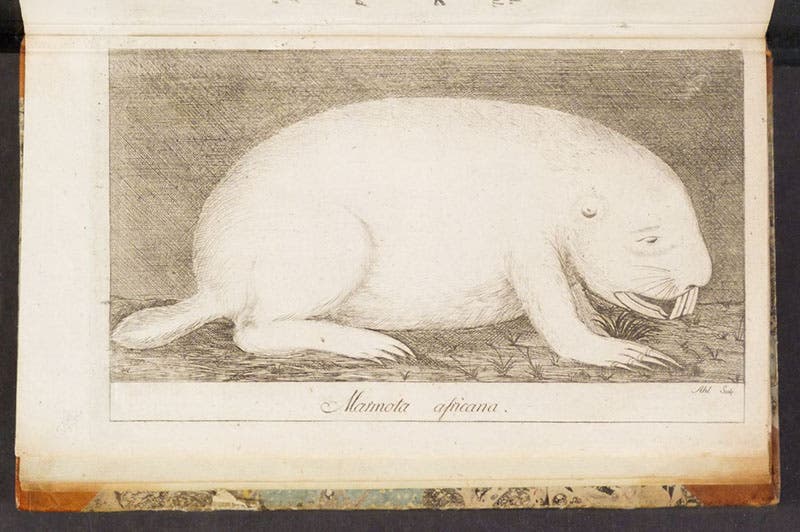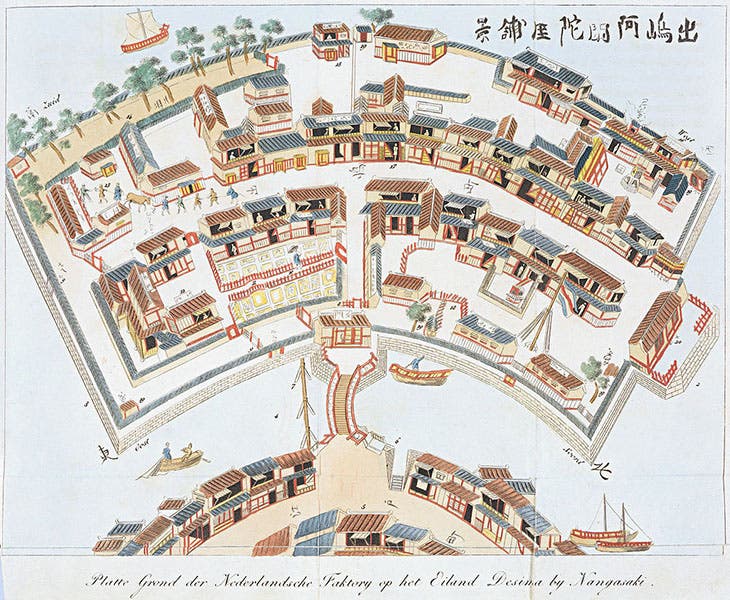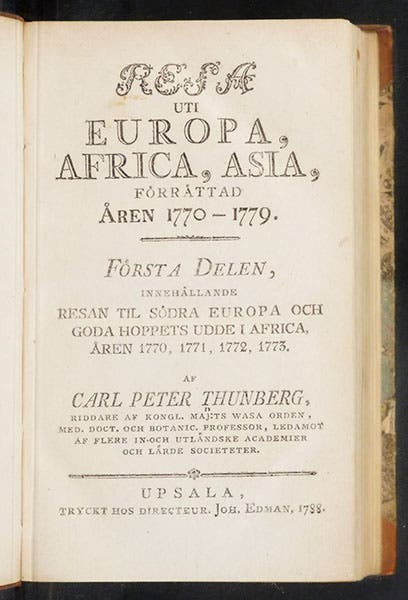Scientist of the Day - Carl Peter Thunberg
Carl Peter Thunberg, a Swedish naturalist and traveler, died Aug. 8, 1828, at the age of 84. He was born in Jönköping in the south of Sweden in 1743, and when he came of university age, he headed to Uppsala, where he became a student of the great Carl von Linné, better known as Linnaeus. After graduating, Thunberg intended to study medicine in Paris, but he got waylaid by Amsterdam and Leiden in the Netherlands. There he met Johannes Burman, another former student of Linnaeus, professor of botany at Amsterdam. Burman convinced him to travel in search of plants, which was a common vocation of Linnaean students, so much so that these itinerant naturalists were often referred to as Linnaeus’s "apostles." There were three places in particular where a Dutchman might be welcomed, or at least tolerated: South Africa, the Dutch East Indies, and Japan. Japan was on the list because, since 1641, the only foreigners allowed to visit Japan were the Dutch, and they were restricted to a small island, Dejima, in Nagasaki bay. No one in Europe knew anything about the flora and fauna of Japan, and Thunberg was encouraged by Burman to go there.
Of course, Thunberg was not Dutch, so first he headed to South Africa, in late 1771, where he would remain for three years, making three expeditions into the interior of South Africa, and learning to speak Dutch. He also collected assiduously, both plants and animals, and sent thousands of specimens back to Uppsala. Finally, in 1775, he engaged himself as surgeon on a Dutch merchant ship and headed for Batavia, in the Dutch East Indies, where he stayed only long enough to arrange passage to Dejima. Dejima was an odd place, an island carved from a peninsula in Nagasaki Bay, built expressly to house the Portuguese when they were in favor in Japan (third image). When the Portuguese were expelled in 1639, the Dutch replaced them as the foreigners of choice, during the Tokugawa shogunate (which would last until 1867). Foreigners in Dejima were not allowed to leave the island outpost except under special circumstances. Thunberg spent 16 months there, where he made himself indispensable to the local physicians and so was allowed to make an excursion to Edo (modern Tokyo), the seat of the shogunate. Thunberg collected many Japanese plants, which he would ultimately describe in his Flora Japonica (1784), a book we do not have in our collections.
Thunberg eventually returned home, by way of Java, Sri Lanka, and the Cape, spending half a year in each location, so that he did not arrive back in Sweden until 1779, having been gone for almost 9 years. Linnaeus had died in 1778, and his professorship was given to his son, Carl junior. Thunberg began in 1779 serving as botanical demonstrator, was promoted to professor, and when Carl junior died in 1783 after a trip to the United States, Thunberg succeeded him (and thus Linnaeus senior) as professor of botany and medicine at Uppsala, taking up his position in November of 1784. Ironically, this was just one month after Linnaeus’s widow had sold his great herbarium and library to James Edward Smith, who took the entire lot back to England and founded the Linnean Society of London. I wonder what Thunberg thought of that?
Fortunately, all of Thunberg’s specimens stayed in Uppsala, and he spent the rest of his academic life naming and describing most of them. He also wrote an account of his travels, which he began to publish in 1788, called Resa uti Europa, Africa, Asia: förrättad åren 1770-1779. Resa means Travels in Swedish. The fourth and last volume appeared in 1793. This original account in Swedish is a scare set of volumes, and we are happy to have the complete set in our collections. It was soon translated into German, French, and English, and these editions are much more common. Oddly, we do not have any of them – just the original edition in Swedish, a language I do not read. Normally, when confronted with a text beyond my ken, I can resort to images. Unfortunately, Thunberg has very few. The first volume, on South Africa, has just two plates at the back, only one showing a plant or animal, in this case, a mammal that he called an African marmot, and we would call a Cape dune mole-rat (second image). In the third volume, there are several interesting plates that show Japanese artifacts, including an abacus, and some other objects I do not recognize (fifth image).
Thunberg's 44 years as Linnaeus' successor are unblemished by any interesting encounters, notable achievements, or colorful stories that I could find. In fact, I probably would have passed him over for someone more interesting, were it not for the fact that we own his Travels. But one statistic did catch my eye – during his career at Uppsala, he supervised 294 dissertations. That is of some interest, but to me, as a former professor, the really eye-popping feature concerning the 294 dissertations is that Thunberg apparently wrote them all. None of them were very long, and most were about specimens he had brought back from his travels. But still. Each dissertation (there are surviving sets of all of them in a few libraries) has Thunberg's name as praeses or director and the student's name as author, but it was often the practice in early modern universities for the advisor to write the dissertation and the student to defend it. We know that was the case with Linnaeus, who wrote all the dissertations made under his direction, and they were published with Linnaeus listed as author. This seems to have been true with Thunberg as well. I would have loved, as a PhD student, to have had my advisor write my thesis. But I would not have enjoyed writing all those theses once I joined the professorial ranks. I am glad times have changed.
There are several versions of a single Thunberg portrait that one can find online. I am guessing that the original – perhaps all the versions – are at Uppsala (first image). Thunberg was also portrayed on a Swedish postage stamp in 1973 – one of a series of five honoring Swedish explorers. In this set containing all five (sixth image), Thunberg is at the top, followed by Anders Sparrman, A.E. Nordensdkiöld, Salomon Andrée, and Sven Hedin. The three with links have been former Scientists of the Day.
William B. Ashworth, Jr., Consultant for the History of Science, Linda Hall Library and Associate Professor emeritus, Department of History, University of Missouri-Kansas City. Comments or corrections are welcome; please direct to ashworthw@umkc.edu.












